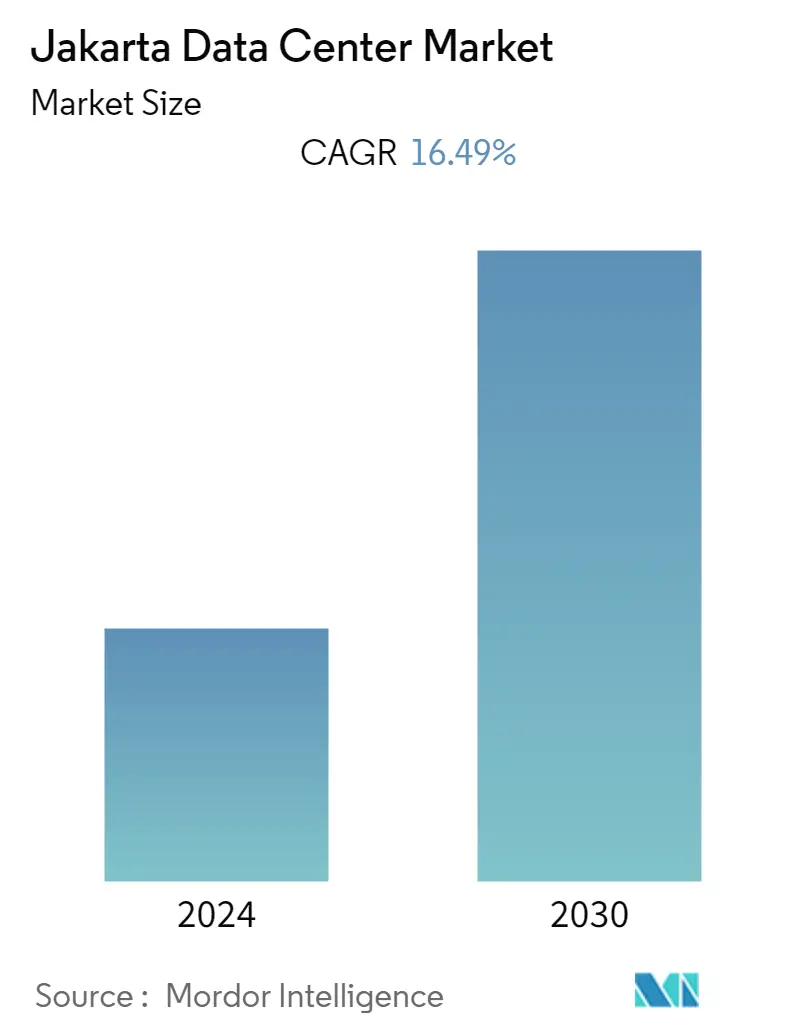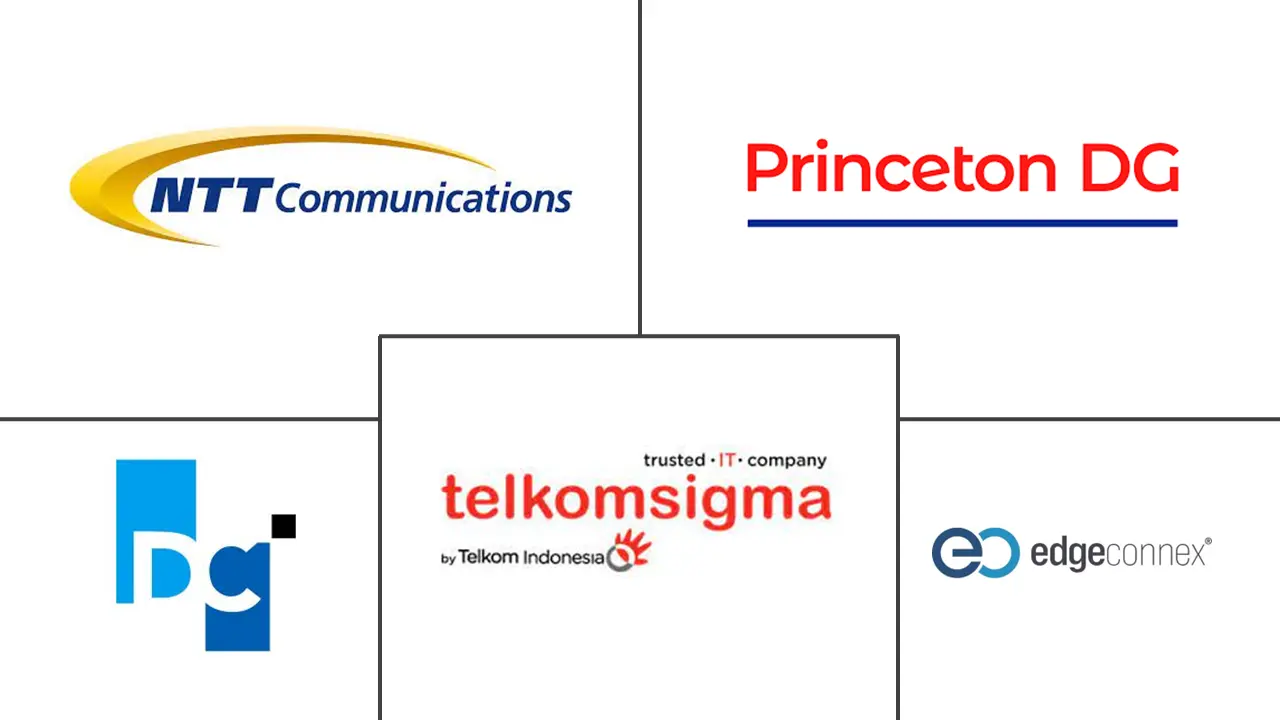Market Size of Jakarta Data Center Industry

| Study Period | 2019 - 2030 |
| Base Year For Estimation | 2023 |
| Forecast Data Period | 2024 - 2030 |
| Historical Data Period | 2019 - 2022 |
| CAGR | 16.49 % |
| Market Concentration | Medium |
Major Players
*Disclaimer: Major Players sorted in no particular order |
Need a report that reflects how COVID-19 has impacted this market and its growth?
Jakarta Data Center Market Analysis
The Jakarta Data Center market stood at 167.87MW in the previous year, and it is expected to witness a CAGR of 16.49% during the forecast period to attain 725.59 MW. The main drivers anticipated to drive the market expansion are the increasing demand for energy-efficient data centers, considerable investment by colocation service and managed service providers, and expanding hyperscale data center building. Additionally, the development of Big Data, cloud computing, and the Internet of Things (IoT) has made it possible for businesses to invest in new data centers to preserve business continuity. Additionally, industrial development is expected to prosper due to the rising need for security, operational efficiency, improved mobility, and bandwidth. Software-based data centers boost industry growth by providing a higher level of automation.
- There are various reasons for the growth of data centers in Jakarta. One of the primary reasons is the country's rapidly growing digital economy and the increasing adoption of cloud services and big data analytics by businesses in the region. With a population of over 270 million people and a fast-growing middle class, Jakarta has become an attractive market for international technology companies looking to expand their operations and establish a presence in Southeast Asia. Another significant factor driving the growth of data centers in Jakarta is the government's push to develop digital infrastructure and increase connectivity across the country. The government is investing heavily in expanding the country's internet and broadband infrastructure, which is making it easier for people to access online services and for businesses to deploy cloud-based applications and services.
- More than any other application, artificial intelligence (AI) with machine learning (ML) needs the construction of whole new data center architecture. AI and machine learning (ML) may require three times the power density of typical data processing, necessitating a data center architecture revolution. To sustain the higher output, specialized cooling systems are also required. Because of the intensive nature of AI and ML computations, there may be a large dispersion of computational, memory, and storage resources among multiple processors in a computing cluster.
- The government in the city is partnering with various AI service providers to deploy the capabilities of AI; this would push the construction of data centers in the region. For instance, in September 2022, the SAS Institute was strengthening its relationship with the Jakarta City Government by aiding with the city's Flood Control System. The JAKI platform predicts and monitors at-risk locations in real time using SAS Analytics for IoT to mitigate potential damage or harm and raise public awareness of crises. With these predictive powers and analysis, the Jakarta City Government can determine when to activate water pumps, accelerating disaster response and improving flood preparedness. The SAS solution uses AI and machine learning to quickly and accurately acquire and act on enormous volumes of data in real time, resulting in a shorter time or speed to take essential actions that limit or eliminate damage to life, property, and enterprises in the city.
- Moreover, development centers have undertaken a substantial study on energy efficiency in data centers, concentrating on optimal quality of service, effective resource utilization, and cost-cutting operations. They intend to reduce brown energy consumption by offering a load-balancing strategy that uses available green energy. Load balancing is based on renewable energy and has been used in several data centers. A workload and energy management plan was implemented to reduce network operational and energy costs. Combined cooling, heating, and power (CCHP) systems can also cut carbon emissions and air pollution while increasing resource energy efficiency dramatically.
- The outbreak of the COVID-19 pandemic affected data center construction in the market studied as it has delayed the construction of several new facilities. Ongoing construction from enterprises and colocation service providers witnessed a halt. Projects pipeline with openings across Q4 2020 and Q1 2021 are majorly affected. The same has been attributed to data center infrastructure-related supply chain disruptions. With problematic imports already in place, the situation worsened as many vendors are dependent on importing IT and power and cooling infrastructure solutions.
